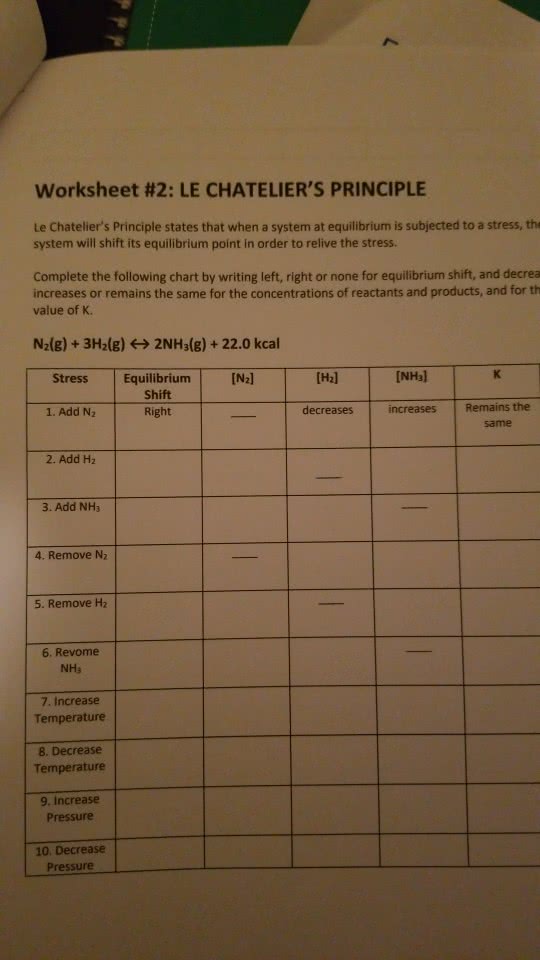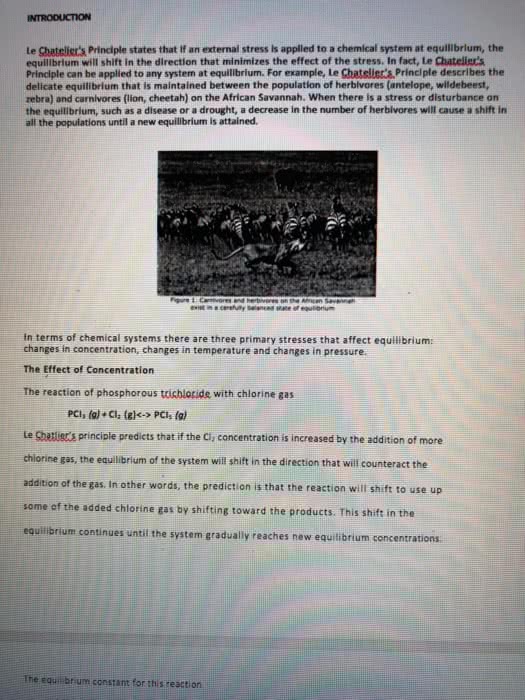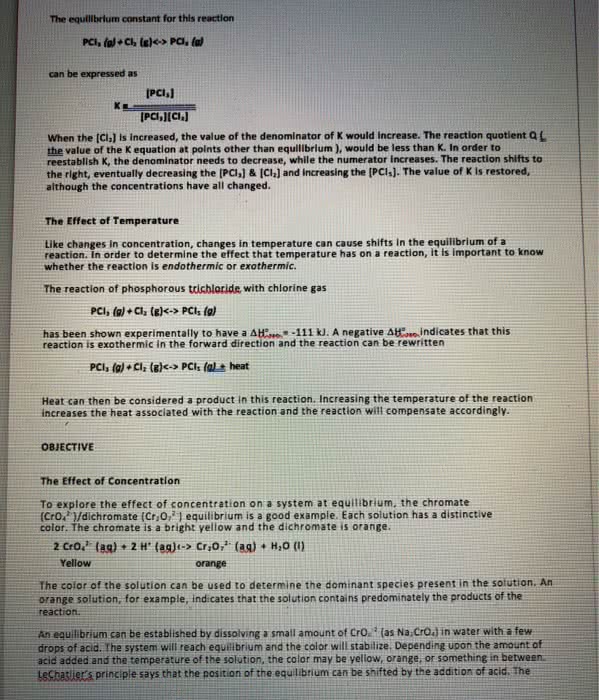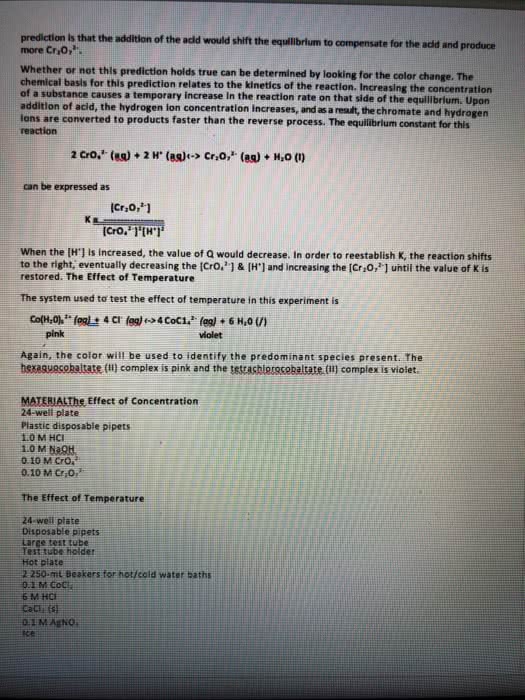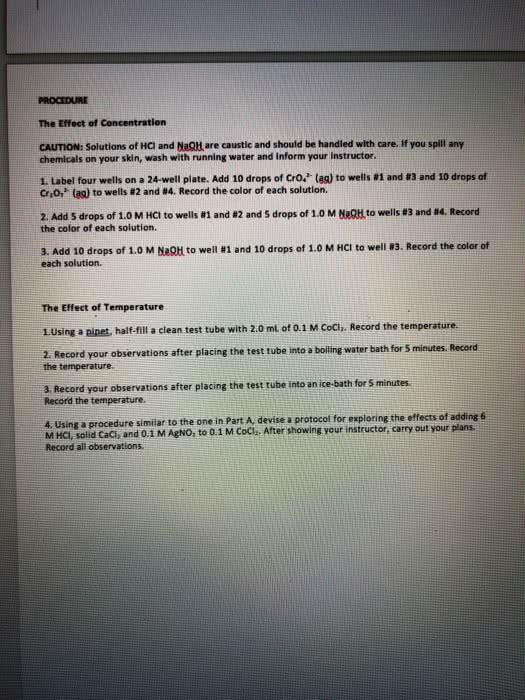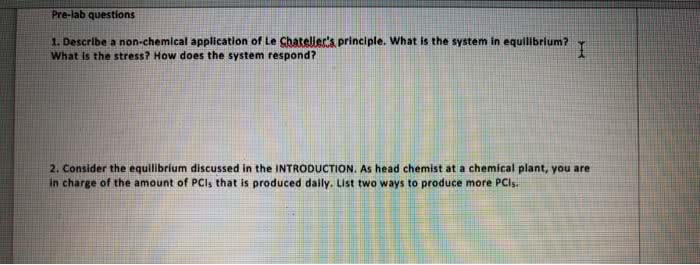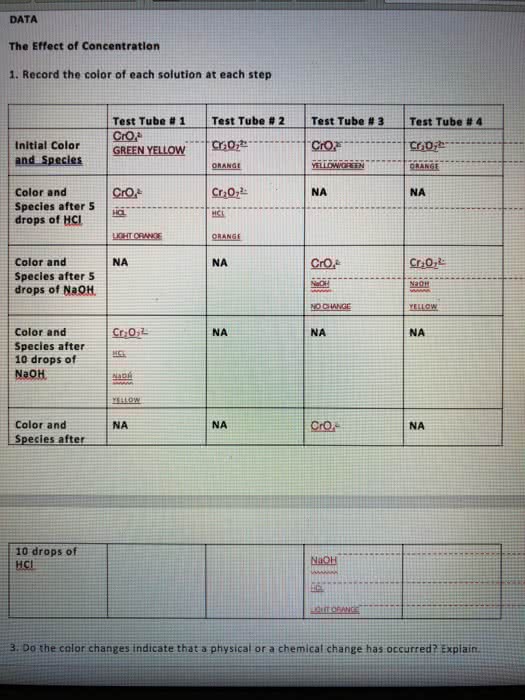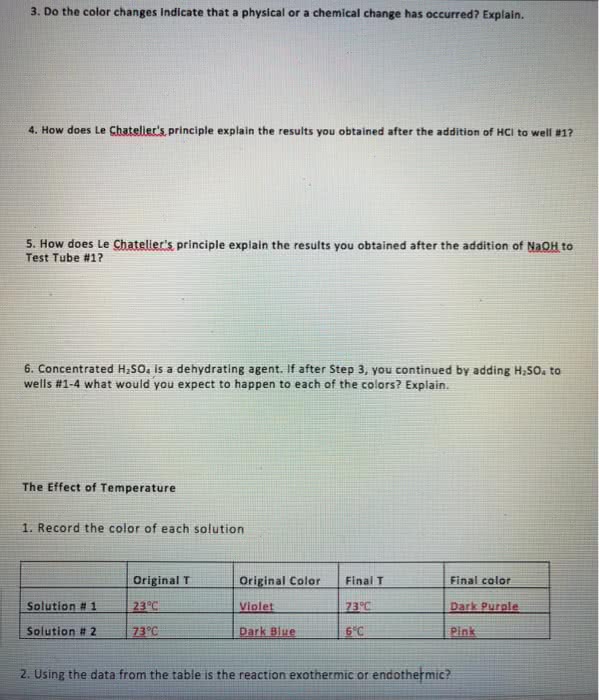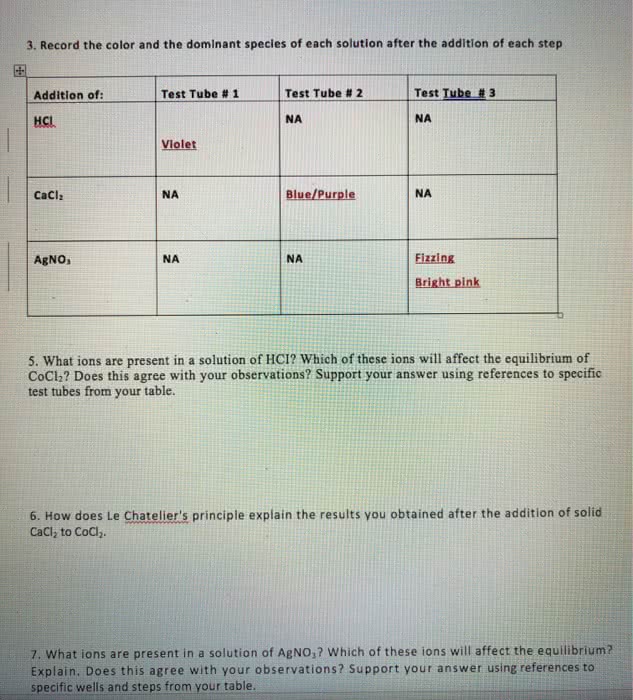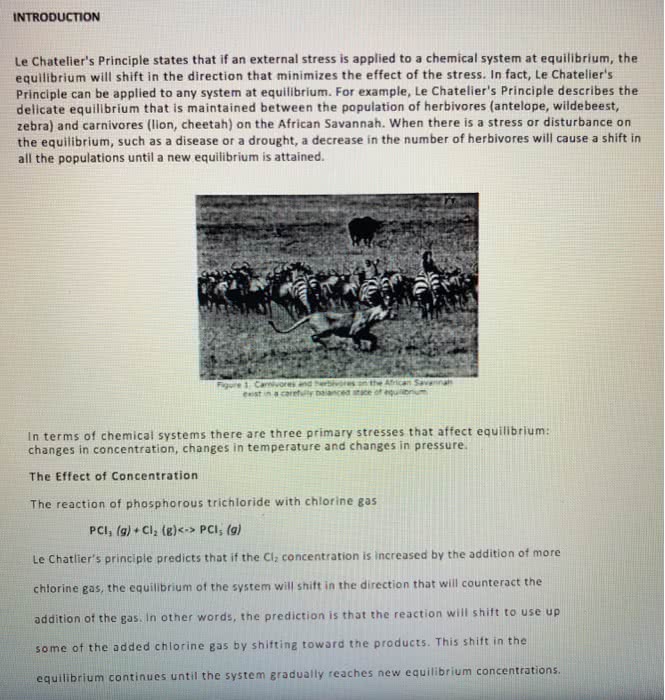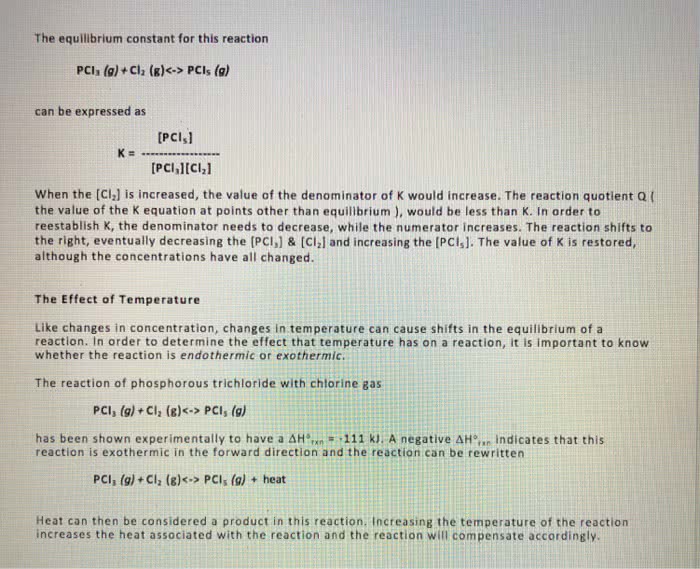CHEM 1212 Lecture Notes - Lecture 1: Dinitrogen Tetroxide, Chemical Equilibrium, Rice Chart

Le Chatelier’s Principle
A system of equilibrium when perturbed will shift in the direction to oppose
the stress on the system
Factors that affect chemical equilibrium
(Le Chatelier’s Principle)
●Concentration: concentrations of chemicals in the equilibrium
expression (not pure liquids or solids) are changed by adding
reactants or products
○if we increase the concentration of reactants then the
reaction will shift in forward direction
○if we increase the concentration of products then the
reaction will shift in backward direction
●Pressure: change the pressure by changing the volume of a system
○If P increases (V decreases), the system shifts to the side
with a smaller number of gas
molecules (this effectively reestablishes equilibrium by
decreasing the pressure).
○If P decreases (V increases), the system shifts to the side
with a greater number of gas
molecules.
●Temperature
○Endothermic (∆H > 0)
■Decrease temp--reactants--k decreases
■Increase temp--products--k increases
○Exothermic (∆H < 0) R Products + Heat
■Increase temp--reactants--k decreases
■Decrease temp--products--k increases
Examples of an ICE Table
In the reaction 2 NO2(g) _ N2O4(g) the initial concentration of NO2 was
0.250 M and N2O4 was 0.000 M. At equilibrium, the concentration of N2O4
was measured as 0.0133 M. (a) Calculate the equilibrium concentration of
NO2 (b) Calculate Kc.
In the following reaction, Kp = 9.3x10-7 at room temperature. Calculate the
equilibrium concentration of N2O4 in a flask initially containing only 3.00
atm of NO2
2 NO2(g) _ N2O4(g)

Reaction quotient
It measures the relative amounts of products and reactants present during a
reaction at a particular point in time. The reaction quotient aids in figuring out
which direction a reaction is likely to proceed, given either the pressures or the
concentrations of the reactants and the products. The Q value can be compared
to the Equilibrium Constant, K , to determine the direction of the reaction that
is taking place.
Q > K
System will shift left (to reactant side) to reach equilibrium
Q < K
System will shift right (to product side) to reach equilibrium
Characteristics of equilibrium system
1. Equilibrium may only be obtained in a closed system.
2. The rate of the forward reaction is equal to the rate of the reverse
reaction.
3. Catalysts have no effect on the equilibrium point. However, changes
in the concentrations of either the products or reactants, temperature,
volume, or pressure can offset the equilibrium point. This point
illustrated in Le Chatelier's Principle
4. 4. The consistency of observable or physical properties such as
concentration, color, pressure, and density can indicate a reaction has
reached equilibrium.
Kc being greater than 10^3 means?
Products are favored
Kc being less than 10^-3 means?
Reactants are favored
kc
equilibrium constants of gaseous mixtures defined by molar concentrations
kp
equilibrium constants of gaseous mixtures defined by the partial pressures of
the gases inside a closed system
Chemical equilibrium

Calculating kp
Calculating kc
Factors not affecting equilibrium
1. Adding a catalyst
2. Adding a pure liquid or solid to system
Instantaneous rate
is measured at a specific point in time (find the slope of a tangent line at a
specified time).
Average rate
Factors affecting rate of a chemical
reaction
●Nature and concentrations of the reactants
●Temperature of reaction system
●Presence of catalyst
●Surface area of the reactants or catalyst
Arrhenius equation
Document Summary
Factors that affect chemical equilibrium (le chatelier"s principle) A system of equilibrium when perturbed will shift in the direction to oppose the stress on the system. Concentration: concentrations of chemicals in the equilibrium expression (not pure liquids or solids) are changed by adding reactants or products. If we increase the concentration of reactants then the reaction will shift in forward direction. If we increase the concentration of products then the reaction will shift in backward direction. Pressure: change the pressure by changing the volume of a system. If p increases (v decreases), the system shifts to the side with a smaller number of gas molecules (this effectively reestablishes equilibrium by decreasing the pressure). If p decreases (v increases), the system shifts to the side with a greater number of gas molecules. Exothermic ( h < 0) r products + heat. In the reaction 2 no2(g) _ n2o4(g) the initial concentration of no2 was.


